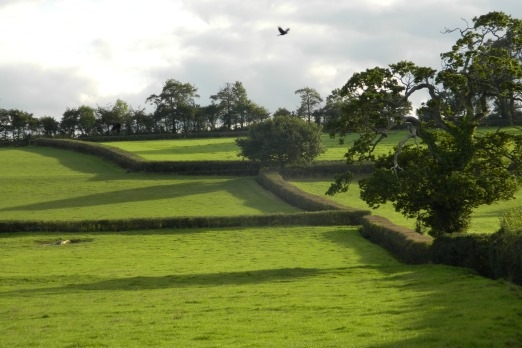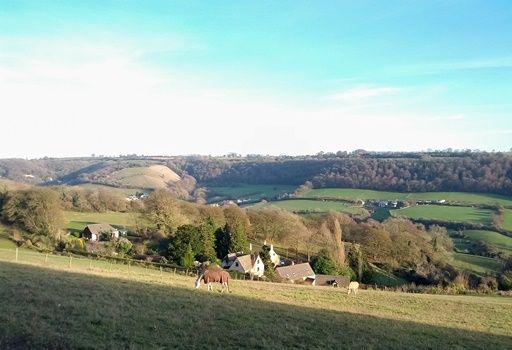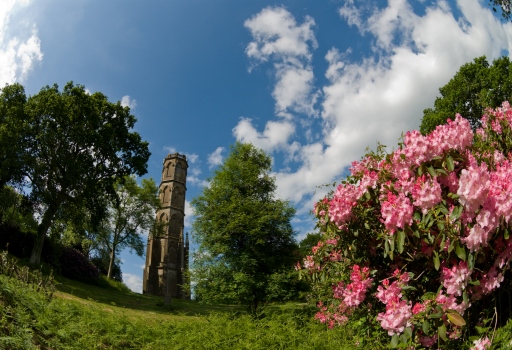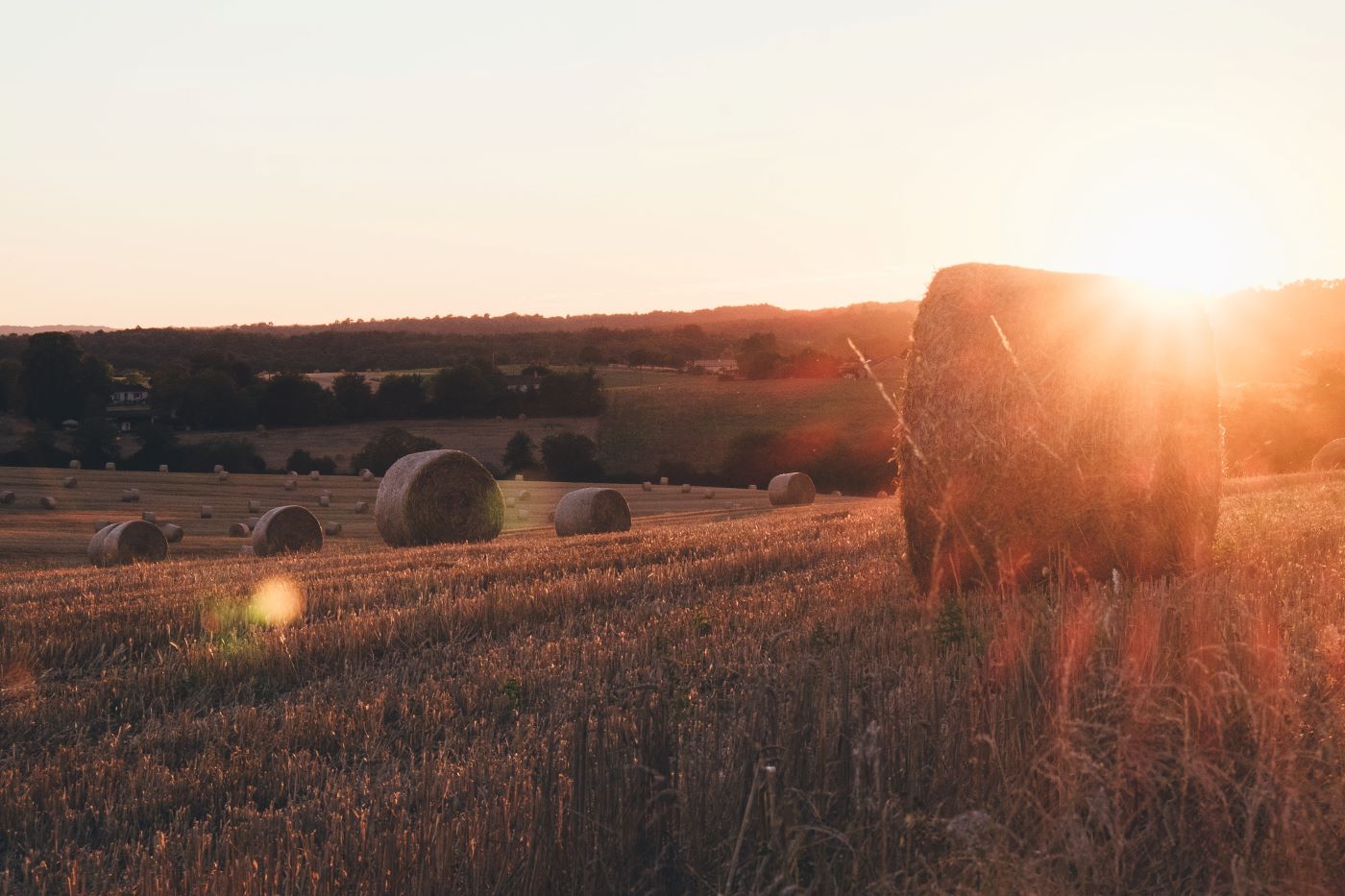In the winter issue of CPRE members’ magazine Countryside Voice, author Melissa Harrison writes about the English landscapes immortalised in works of literature. From the wild Lake District mountains that inspired Wordworth’s poetry, to the Devon rivers that formed the backdrop to Tarka the Otter, these places occupy a special place in our cultural imagination.
Protecting our literary landscapes
 Fields surrounding East Coker, the village made famous by T.S. Eliot
(Michael Day/Flickr)
Fields surrounding East Coker, the village made famous by T.S. Eliot
(Michael Day/Flickr)
Sadly, like much of the countryside, these literary landscapes are under increasing threat from inappropriate development. But the good news is that many of these places have been saved to inspire future generations, thanks to the continuing work of CPRE’s local branches. Here are just a few of the iconic places that CPRE’s local branches have fought so hard to protect.
T.S. Eliot’s East Coker
The village of East Coker in Somerset was made famous by T.S. Eliot in the second poem of his Nobel-prize-winning Four Quartets, published in 1943. The tranquil village had a particular significance for the writer, who discovered that his ancestors had called it home until they emigrated to America in 1669. Eliot even asked for his remains to be kept there – his ashes are now buried by the village church.
East Coker’s rural setting has come under repeated threat by large-scale developments: from proposals of an 800-house extension that would see the village swamped by nearby Yeovil’s urban sprawl, to plans for a 2,500-house new town in the village’s surroundings.
Local campaigners have mounted opposition to these plans – and even some not-so-local campaigners have got themselves involved: the TS Eliot Society of America wrote to South Somerset District Council, urging councillors to change the plans.
Thanks to the campaigns of those like the East Coker Preservation Trust, the threat to the village has now been reduced. CPRE Somerset is now calling for a Yeovil Green Belt, to prevent the city swallowing up the countryside, and to permanently protect the unique character of villages like East Coker.
Laurie Lee’s Slad Valley

The view across Laurie Lee's Slad Valley
Gloucestershire’s Slad Valley is well known as the setting for Cider with Rosie, Laurie Lee’s tale of his rural childhood. CPRE Gloucestershire was involved in a long battle with developer Gladman over plans to build 100 houses overlooking the Slad Valley, with repeated attempts over a number of years to develop this much-loved landscape.
Gladman’s original planning application was rejected in 2014, but it sought a judicial review in a bid to get the decision reversed. Eventually, Gladman withdrew its legal challenge just a week before the review went ahead – only to return in early 2016 with new plans to build 20 homes on the site. Once again, the developer’s proposal has been refused by the council.
Gladman’s persistence is just one example of the sustained pressure developers are putting on England’s precious landscapes. But Richard Lloyd of CPRE Gloucestershire thinks the developer’s defeat should give us hope: "When sound explanations and a reasoned defence are mounted against an unreasonable planning application, developers can see their plans defeated, however big their chest of fighting funds."
EM Forster's Hertfordshire
Unique in Stevenage for its historical and literary connections, Forster Country is an area of Green Belt land to the north of the town celebrated in EM Forster’s famous novel ‘Howards End’. It is the last remaining farmland in the borough, and offers undulating fields bordered by ancient hedges with a view of the higher Chiltern Hills beyond. Much has changed since Forster lived here but the countryside he described as ‘the loveliest in England’ is essentially the same. It is a vital green lung, enabling people to enjoy the rural aspects of Stevenage as envisaged in the original New Town concept.
In 2015, CPRE Hertfordshire presented their Peterkin Award for a Rural Living Champion to Margaret Ashby, a co-founder of the Friends of Forster Country group, for "her determination and dedication in ensuring the protection of a precious area of Green Belt known as Forster Country" for over thirty years. The judges' citation went on to say that "it is very unlikely that, without Margaret's energy and enthusiasm, this piece of countryside would still be undeveloped."
The Friends of Forster Country helped prevent the development of some 150 acres of farmland, but the area is increasingly vulnerable from housing requirements in Local Plans. Find out more at www.forstercountry.org.uk and support CPRE Hertfordshire’s campaign to defend the Green Belt at www.cpreherts.org.uk
Thomas Hardy’s Charborough Park

Charborough Tower, the inspiration for Thomas Hardy's novel 'Two on a Tower'
In 2015, Good Energy submitted plans to build one of the largest solar farms in the country in Mapperton, Dorset. Covering 1,600 acres with 90,000 solar panels, the development would take up a space equivalent to over 66 football pitches. As well as being in an ‘Area of Great Landscape Value’ – a protected landscape designation – the solar farm would also threaten the Grade II* listed park and Grade I listed buildings which were the setting for Thomas Hardy’s ‘Two on a Tower’. Charborough park, with its house and tower, were the model for Welland House in Hardy’s tale of star-crossed lovers.
CPRE Dorset is in principle in favour of renewable energy, but joined local residents in campaigning against this harmful development. The solar farm’s potential impact on the setting of Charborough Park played a part in the eventual high court decision to quash Good Energy’s proposal: among the 700 objections, many were concerned about the impact on the setting of Hardy’s works. Commenting on the decision, Rupert Hardy of CPRE Dorset said: ‘the vast installation would have been a blight on the landscape of Thomas Hardy’s Wessex.’ Despite this, the proposal for the Mapperton Farm solar park has been resubmitted. Add your voice to CPRE Dorset's objection before 22 December.
More featured articles
-
We're making some changes2019-08-01Calling all graduates...2019-06-24Women countryside campaigners: the 1920s2019-01-31The landscapes they left behind2018-11-09A deposit return system for England2018-03-28Emma Bridgewater on CPRE's big ideas2017-07-24My England: the photographer’s vision2017-04-19Leicestershire: A Heritage at Risk2017-01-05And that’s a wrap!2016-12-23What next for rural England?2016-12-16Finding inspiration in the Green Belt2016-12-16Protecting our literary landscapes2016-12-07Celebrating 90 years of CPRE2016-12-07Web survey book winners announced2016-10-28Why we should buy locally produced food2016-09-27



